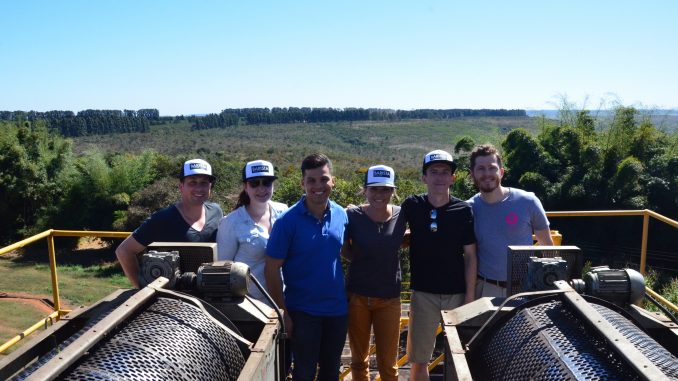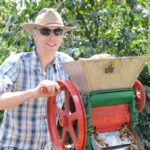
Famed Brazilian Producer Daterra Welcomes Barista Champions for an Unforgettable Week Exploring Coffee!

For the second year in a row, Daterra Coffee, invited the six finalists from the World Barista Championship to visit their farm in Cerrado, Minas Gerias, Brazil to experience coffee production firsthand.

Three of the six finalists were able to make the trip, and they were joined by two of Brazil’s champion baristas for the visit.

Canadian Barista Champion Ben Put from Monogram Coffee in Calgary, Alberta; United Kingdom Barista Champion Maxwell Colonna-Dashwood from Colonna and Smalls in Bath, England; and French Barista Champion Charlotte Malaval met up with Brazilian Coffee in Good Spirits Champion Eduardo Affonso Scorsin and Brazilian Brewers Cup Champion Carolina Franco de Souza both from Lucca Cafes in Curatiba, Brazil in Sao Paulo before taking an early morning flight to Uberlandia and then driving to the farm for their week-long adventure through Dattera’s amazing coffee growing and processing operation guided by Gabriel Agrelli Moreira.

While the group had an opportunity to tour the facilities and the farms to see how the coffee is grown and processed, the event is much more hands on than just that. The baristas also had a chance to harvest coffee by hand, with the help of seasoned mentors who gave assistance and advice for picking. Not just that, but the baristas had their choice of varietals to pick!

After filling two buckets with cherry, the baristas then faced their next decision: How to process the coffee. Maxwell chose a traditional pulping, while Carolina, who picked only yellow bourbon, wanted to process her coffee as a natural, drying the pulp on the cherry. Eduardo, demonstrating his background in bartending, fermented his coffee with a bath of sugar and beer, while Charlotte invented an entirely new technique and depulped her coffee with her feet!

Next the baristas needed to dry their coffee before they would sort it for defects the following day and roast it before cupping it on the last day of their visit. Of course, the whole thing is also a competition, so the baristas will be cupping blind and voting on which coffee they think is the best.





